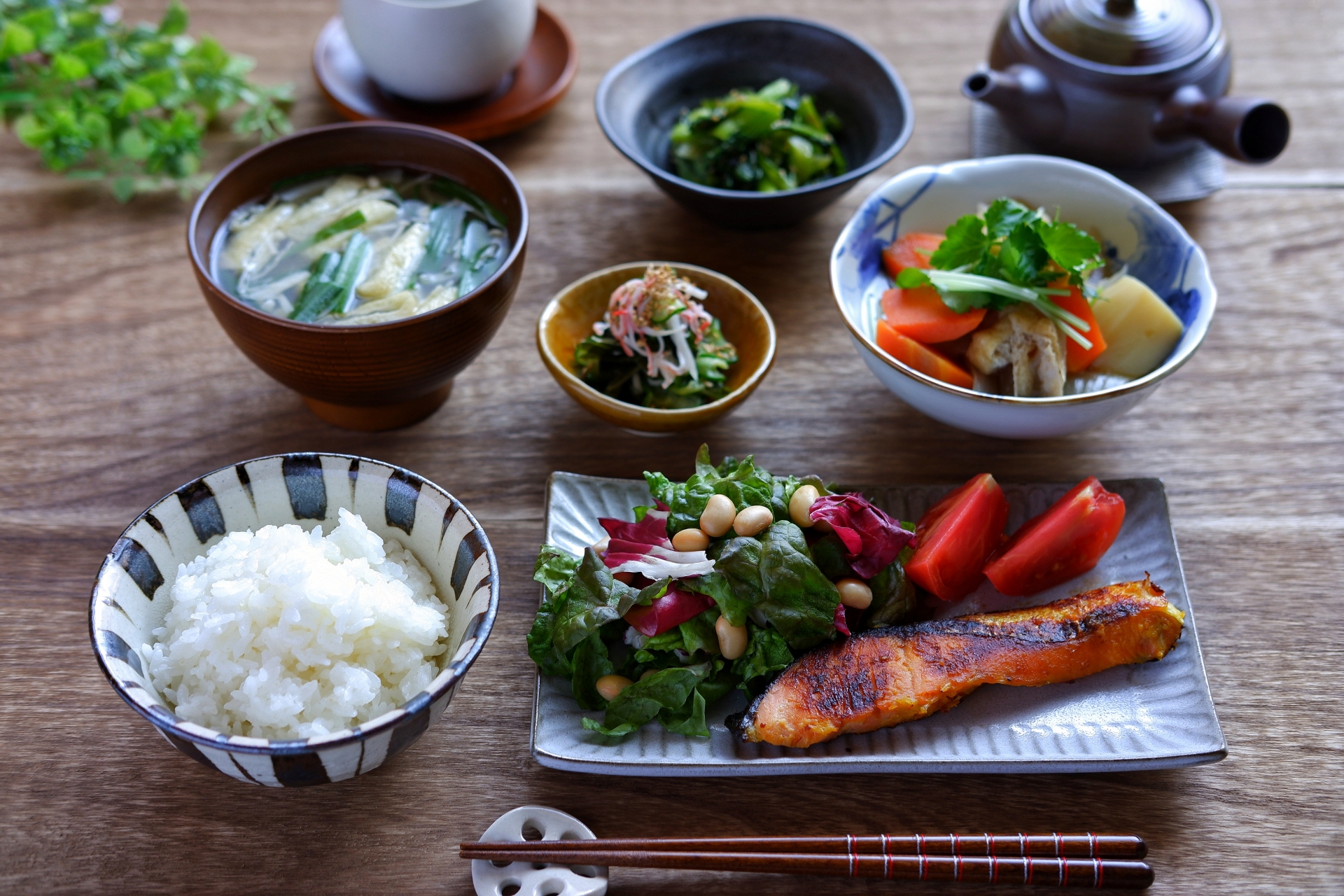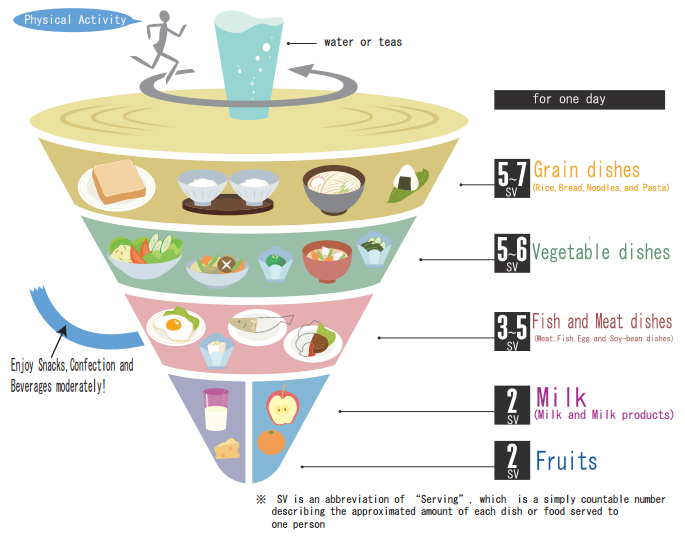Japan, with its rich cultural tapestry and timeless traditions, has a unique approach to medicine and well-being that has captivated the world. Navigating the Japanese healthcare system can be a breeze with a few key insights. Firstly, it’s advisable to familiarize yourself with the local clinics, often known as “Iin” or “Kenshin,” where general practitioners address non-emergency medical concerns. While language barriers can be a challenge, major hospitals in urban areas often have English-speaking staff. Establishing a relationship with a local general practitioner ensures continuity of care and a better understanding of your health needs.
Eating Right
 |
| Source: Japan Wonder Travel Blog |
Staying healthy in Japan goes beyond medical visits. Embracing the Japanese diet, rich in fresh fish, vegetables, and green tea, can significantly contribute to well-being. The emphasis on portion control and a balance of nutrients align with the traditional Japanese concept of “hara hachi bu” – eating until you are 80% full. This mindful approach to eating is a cornerstone of the country’s remarkably low obesity rates and long life expectancy.
Japanese Food Pyramid
The pyramid below is the Japanese Food Pyramid assembled bythe Ministry of Health, Labour and Welfare and Ministry of Agriculture, Forestry and Fisheries of Japan. It provides a structured guide for a balanced Japanese diet, emphasizing staple foods and incorporating cultural elements such as tea and specific fruits.
 |
Exercise and Hydration: At the top, emphasizing an active lifestyle and adequate hydration, particularly through water and the health benefits of Japanese Green Tea, rich in flavonoids with antioxidant properties.
Grains and Vegetables: Forming the base, with recommendations to consume 5 to 7 servings of grains daily, including staples like rice, noodles, and pasta. Vegetables, with a suggested intake of 5 to 6 servings daily, are essential, with options like Wakame, Nori, and Tsukemono.
Meats and Fish: Following, with a recommendation of 3 to 5 servings, featuring fish prominently due to Japan's sushi and sashimi culture. Eggs are also included in this category, versatile and popular in Japanese cuisine.
Milk and Fruits: The top accent of the diet, suggesting 2 servings of milk and 2 servings of fruits, reflecting a relatively lower emphasis on fruit compared to other food groups. Notable Japanese fruits include persimmons, ringo apples, and Japanese pear nashi.
Japanese Food Concept “Ichijuu-Sansai” (一汁三菜)”
"Ichijuu-Sansai" emphasizes a balanced diet through the consumption of one soup and three dishes. Originating from the Heian period, this philosophy promotes nutrient-rich meals that typically include rice, soup, a main dish (often meat or fish), and two side dishes (such as vegetables, tofu, mushrooms, or seaweed).
While the main dish might involve more elaborate cooking, there are plenty of simple options like grilled or pan-fried fish or chicken. Side dishes can be as effortless as chilled tofu with various toppings like soy sauce, green onion, or grated ginger, offering versatility and ease of preparation.
Adding a fiber-rich salad with ingredients like lettuce, cabbage, carrots, and onions complements the meal. Dressing options range from ready-made sesame dressing to homemade vinaigrette.
Miso soup, a staple in Japanese cuisine, offers flexibility with ingredients like tofu, seaweed, vegetables, seafood, or meat. Alternatively, Western-inspired soups like minestrone or chowder can provide variety to the meal rotation.
"Ichijuu-Sansai" encapsulates not only a dietary principle but also a culinary approach that celebrates simplicity, balance, and diversity in everyday meals.
Clean the Body
 |
| Onsen in Japan. Source: Thrillist. |
One quintessential Japanese health practice is the ritual of bathing in onsen, natural hot springs scattered across the country. Beyond their aesthetic appeal, onsens offer therapeutic benefits owing to their mineral-rich waters. The minerals, such as sulfur and radium, are believed to alleviate various skin conditions, improve circulation, and reduce stress. Japanese culture places great importance on communal bathing, fostering a sense of unity and relaxation. Visitors should be aware of onsen etiquette, including thorough cleansing before entering the bath and refraining from bringing towels into the water.
Strengthen the Will
Japan’s commitment to preventive healthcare is also evident in its strong emphasis on physical activity. From traditional martial arts like judo and kendo to contemporary fitness trends, there is a broad spectrum of activities catering to diverse preferences. The Japanese government actively promotes a healthy lifestyle through initiatives like “metabo,” addressing metabolic syndrome through diet and exercise. Engaging in local fitness activities not only enhances physical health but also provides a cultural immersion, connecting residents and expatriates alike.
Clear the Mind
In addition to physical well-being, mental health is gaining recognition in Japan. The cultural concept of “forest bathing” or “shinrin-yoku” highlights the therapeutic benefits of spending time in nature. Parks and green spaces abound in Japan, offering urban dwellers a respite from the bustling city life. Furthermore, mindfulness practices such as meditation and yoga are gaining popularity, providing tools to manage stress and enhance overall mental resilience.
Conclusion
In conclusion, Japan’s holistic approach to health encompasses not only medical care but also dietary habits, communal practices like onsen bathing, and a commitment to staying active. Visitors and expatriates can unlock the secrets to longevity by embracing these facets of Japanese culture. As you navigate the vibrant streets of Tokyo or the serene landscapes of Kyoto, take a moment to savor the nutritious cuisine, immerse yourself in the soothing waters of an onsen, and perhaps join a local fitness class. In the intersection of tradition and modernity, Japan offers a blueprint for a healthy and fulfilling life.


Comments
Post a Comment